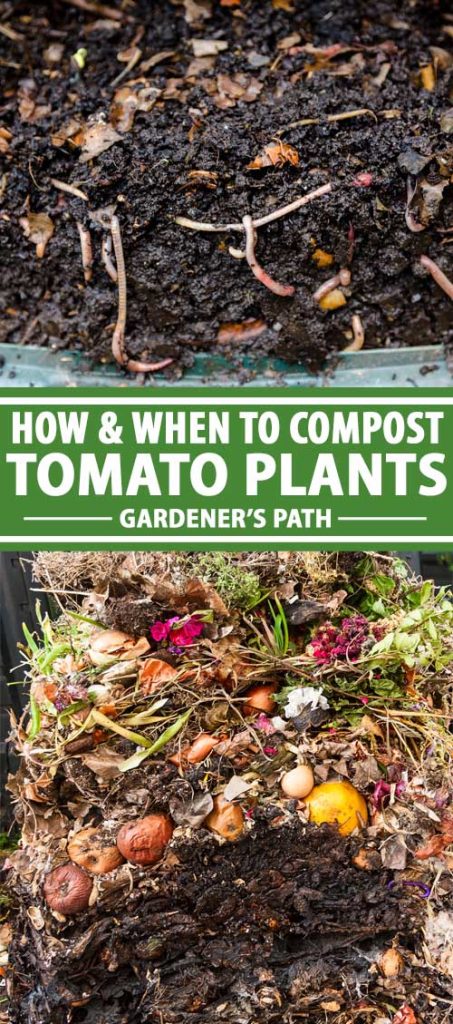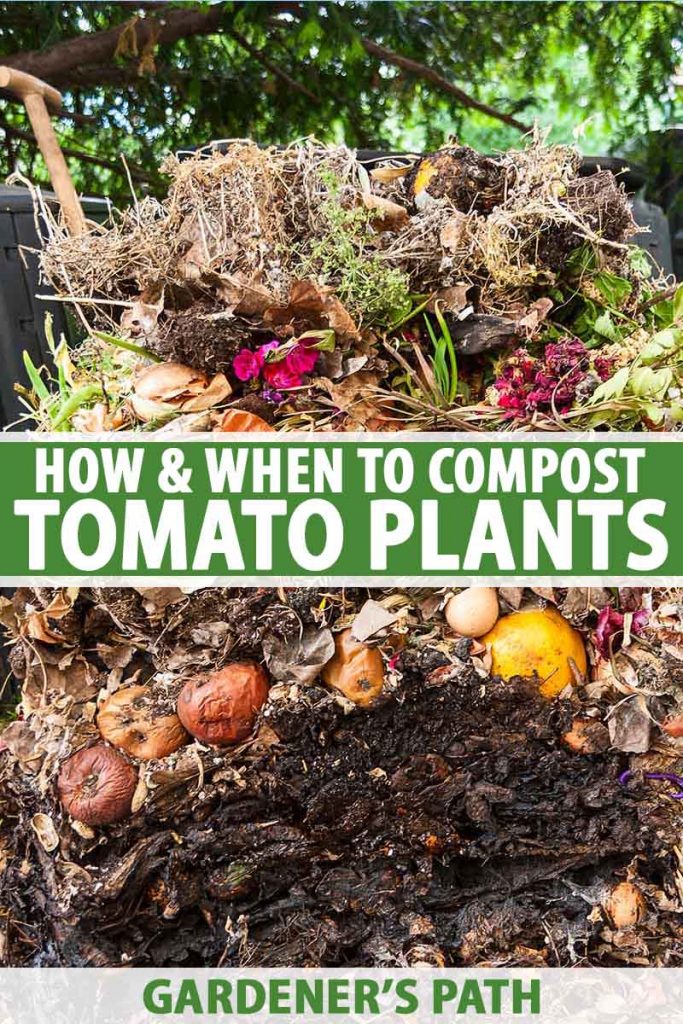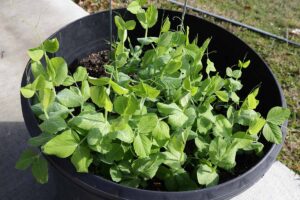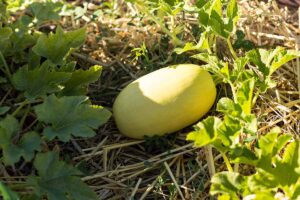Ask a handful of gardeners if it is okay to compost tomatoes and you are bound to get conflicting answers.
A question of great controversy, everybody seems to have a different opinion on whether or not this is an acceptable practice.
The truth is that the answer can go either way, depending on a few factors.
Composting tomatoes is indeed risky, but it can be done so long as a few basic criteria are met.
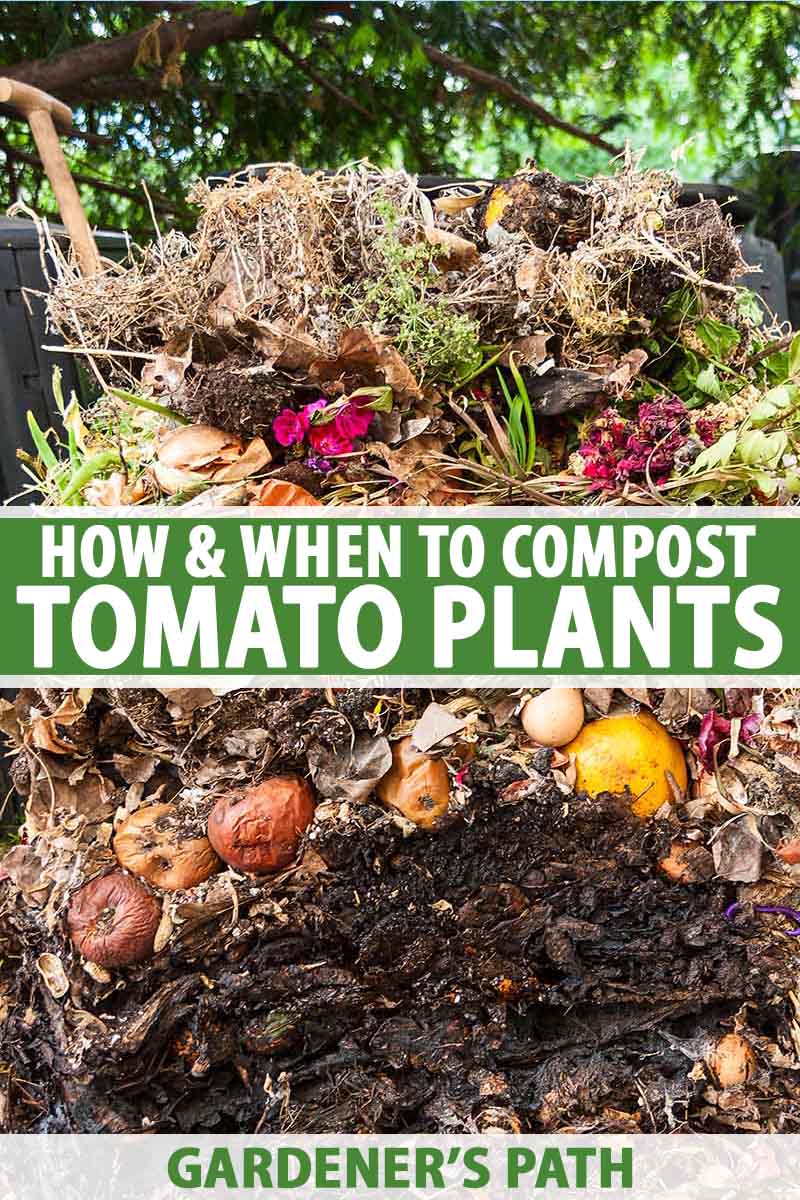
We link to vendors to help you find relevant products. If you buy from one of our links, we may earn a commission.
This article will break down the concerns that often arise, and share steps you can take to mitigate potential problems.
What You’ll Learn
What Are the Risks?
It is true that composting tomato plants can be problematic. If it is not done correctly, it can lead to all sorts of headaches the next season, which is why many prefer to trash their plants and avoid the practice altogether.
There are several risks associated with composting these plants in particular: potential disease spread, the growth of unwanted volunteer plants, and inadequate breakdown of plant material. Let’s take a look at each of these, followed by tips for managing your compost pile effectively.
Disease Spread
Spreading disease is the most serious concern associated with composting these plants.
If plant matter contains pathogens that don’t die in the composting process, those diseases can come back to wreak havoc on next season’s crop.
Many bacterial and fungal organisms can survive on plant tissue in the middle of an improperly managed compost pile. Late blight and early blight, for instance, can overwinter on vines that haven’t broken down completely.

In order to safely compost potentially diseased plants, it is crucial for the pile to be hot. This means consistent temperatures between 131 and 170°F.
Proper composting techniques are important, to ensure that plant material breaks down properly and pathogens are destroyed.
Even if done correctly, some diseases such as fusarium wilt, verticillium wilt, and bacterial canker can survive the composting process. In general, if you suspect your plants of harboring disease, it will likely save you some trouble to keep those plants out of the pile entirely.
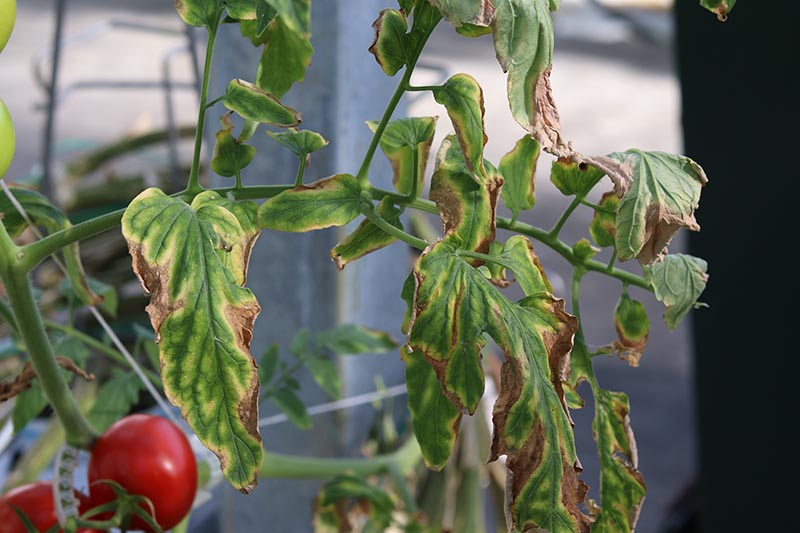
Personally, I hate the idea of trashing plants.
Instead, I have created a second heap, far away from my garden, where I throw suspect tomato plants along with weeds, grass, and any other viney plant material that doesn’t break down well, or material that may be filled with unwanted seeds.
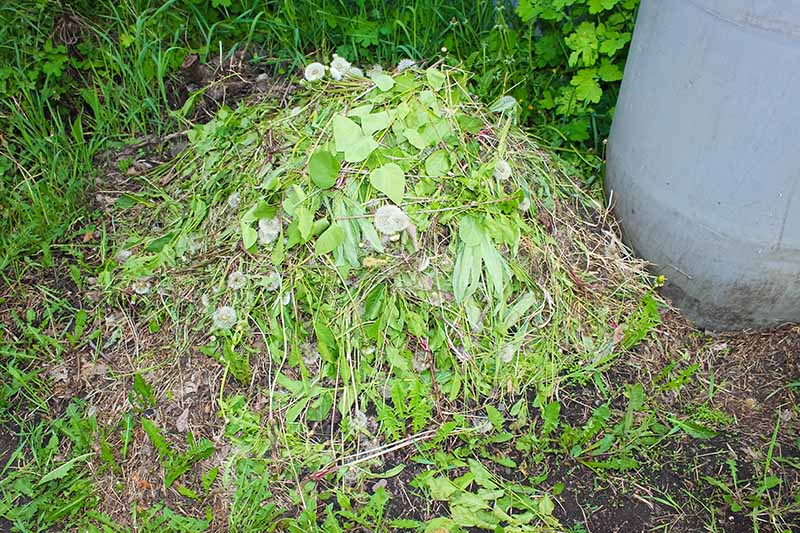
If you have the space, I highly recommend creating a second pile with this designation. Just make sure to keep it out of the way and avoid using the finished compost in your vegetable beds.
Read more about composting diseased plants here.
Volunteers in the Garden
If fruits are composted along with the vines, it is possible that some seeds may survive the winter, resulting in seedlings that pop up in random spots around the garden next spring.

I always remove the fruit from the vines and toss them in the garbage instead of on my compost pile. In order to kill the seeds, the compost pile needs to maintain a temperature of over 140°F for two weeks or more.
Depending upon your perspective, this may be a good thing… extra tomatoes that you didn’t have to work for!
But don’t get too excited.
While it is possible to glean a healthy yield from volunteer tomatoes, it is also possible they won’t produce fruit at all if you have grown hybrid varieties. They may also have the potential to harbor pathogens that can spread to the rest of your crop.
While it is generally recommended to remove volunteer tomatoes, my curiosity sometimes gets the better of me and I allow a few to grow.

While one or two may not be a problem, I would recommend removing volunteers in any areas tomatoes grew last season, as well as from wherever you are planning to grow them this season.
If you see them appearing on your compost pile, just turn it over and dig them in.
Learn more about growing tomatoes from seed in this guide.
Inadequate Breakdown via Large, Messy Vines
Tomato vines are large and may not break down well if thrown willy-nilly into the compost. In addition to having the potential to harbor disease, viney compost is just plain annoying.
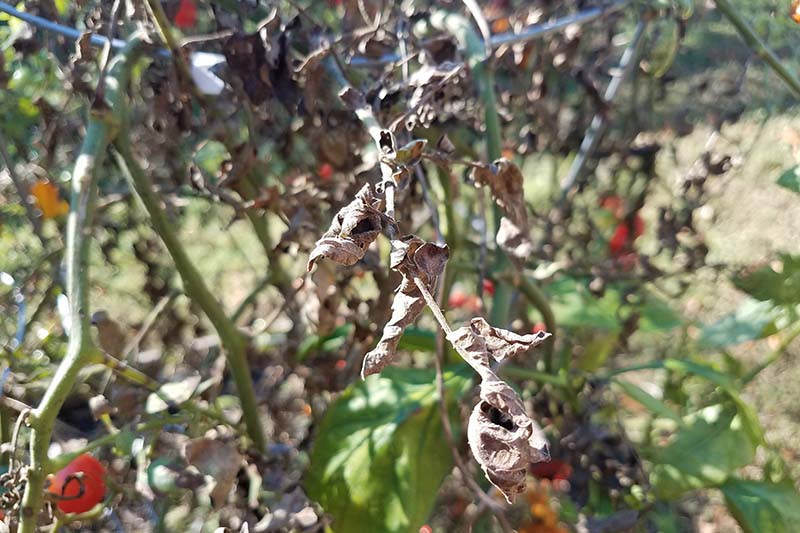
In order to avoid a big viney mess, always break up the plant material into smaller pieces before throwing them in.
Managing the Pile
With so many worries to consider regarding trouble down the road, is it ever worth it to compost tomatoes?
The answer is yes, just so long as you have a properly managed hot compost pile that maintains an internal temperature between 131 and 170°F.
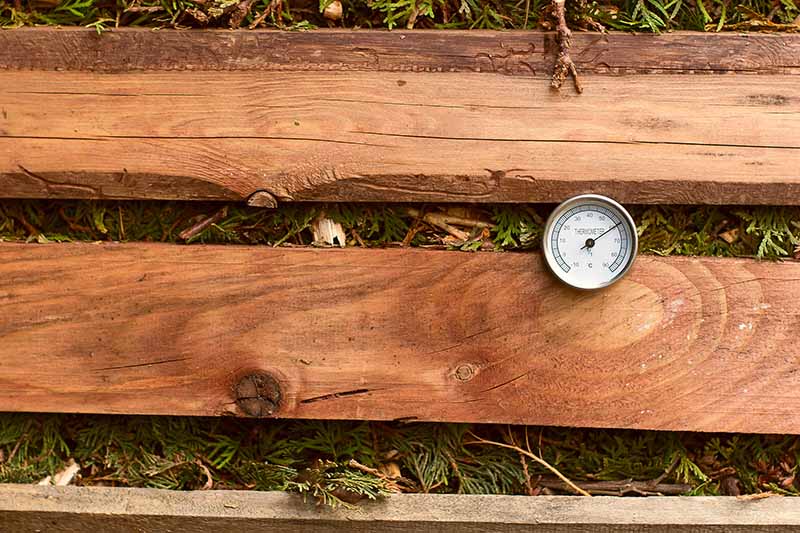
Oxygen, moisture, and a balanced mix of materials are key.
Good air circulation is crucial, as oxygen is needed to support the beneficial microorganisms that are working to break down the material.
The National Organic Program recommends turning the pile a minimum of five times every 15 days to maintain adequate airflow.
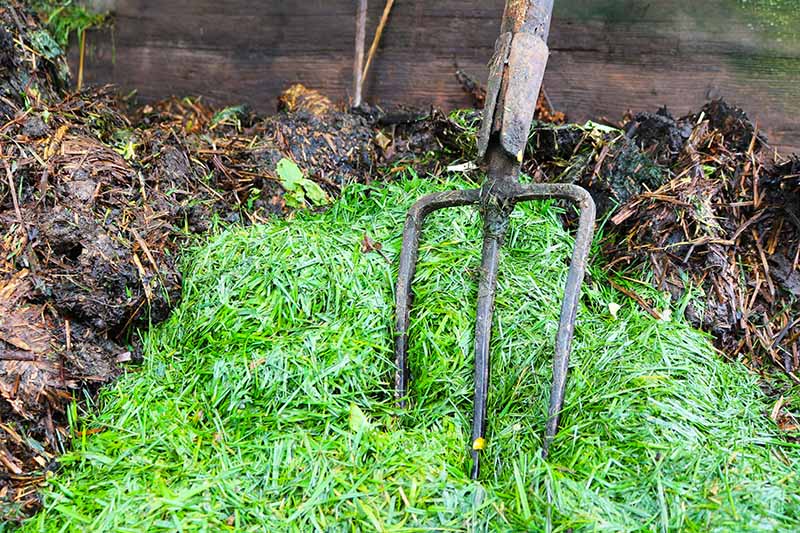
Those microorganisms also need water to survive. Keep the pile moist, but not sopping wet.
It is also important to keep an eye on what materials you are adding, and try to maintain a balance of “green” nitrogen-rich material to “brown” carbon-heavy material.
Generally, you want to maintain a ratio of three to four parts “browns” to one part “greens.”
When you add food scraps, green plant material, or grass clippings to the heap, be sure to mix in some dead plant matter, leaves, or straw, too, and vice versa.
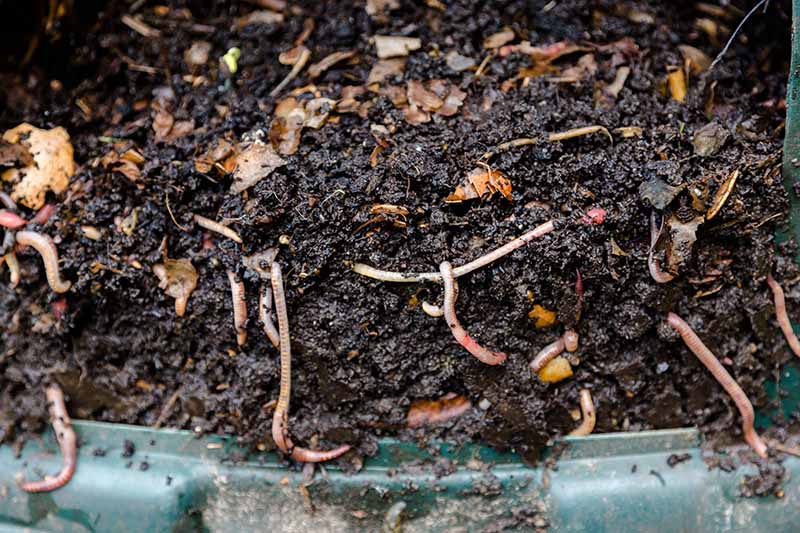
Depending on your methods and management practices, it could take anywhere from three months to a year to fully break down the material into usable compost.
For more information on the basics to composting, check out this guide.
Have No Fear
You can decide for yourself whether it is worth composting those tomato plants. If you choose to go for it, just remember to abide by the following rules:
- Trash or separate material that shows signs of bacterial or fungal disease.
- Break up big pieces before throwing them in.
- Keep your pile hot and active by maintaining good airflow, moisture, and a balance of green and brown materials.
Just like other plants, tomatoes can certainly be broken down into nutrient-rich compost. It just takes a little extra thought and care to do it right.
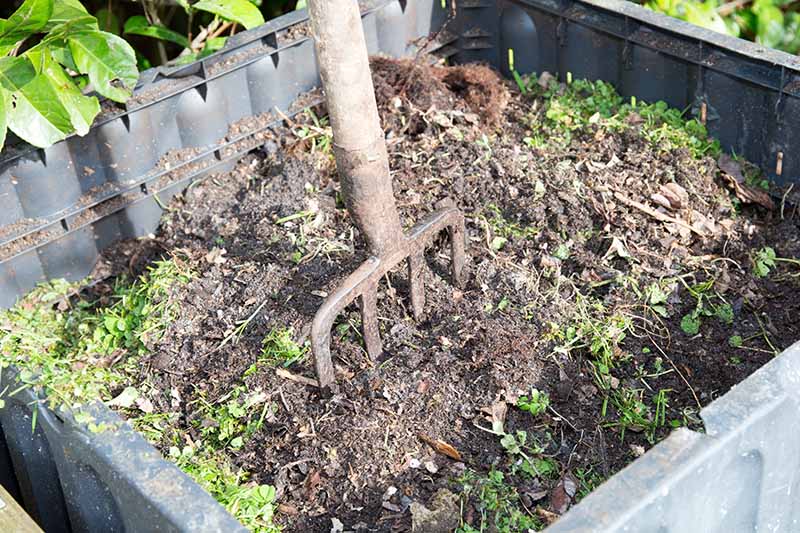
Do you compost or dispose of your tomato plants? Share your challenges and successes in the comments below!
If you’re in the mood for more composting ideas, be sure to check out our guides.
And for more information on growing tomatoes in your garden, you’ll need the following guides next:
- Cracked Fruit on the Vine: Are Split Tomatoes Safe to Eat?
- How to Grow and Care for Tomatoes in Your Garden
- What’s the Difference Between Determinate and Indeterminate Tomatoes?
- How to Plant and Grow Tomatoes in Clay Soil
© Ask the Experts, LLC. ALL RIGHTS RESERVED. See our TOS for more details. Uncredited photos: Shutterstock.
